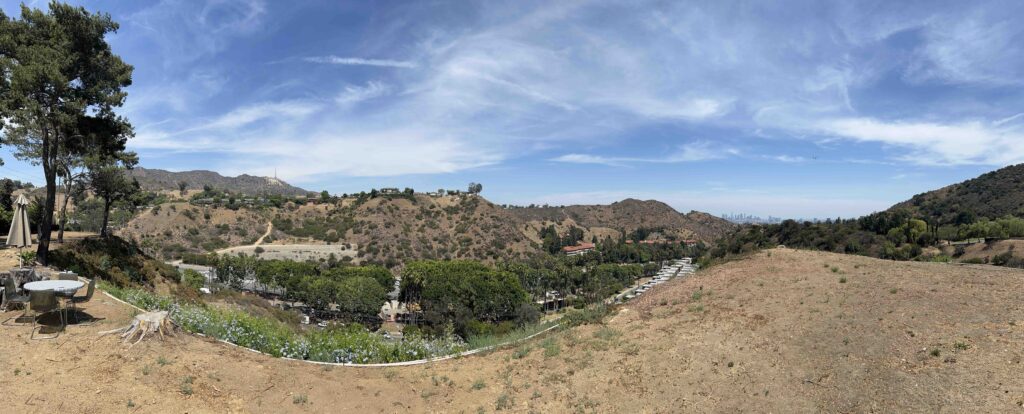
Newest version appears less restrictive than initial draft ordinance; enactment (if approved) still 6+ months away
An updated version of the draft Wildlife Ordinance was released late Friday by the Department of City Planning, along with a “save the date” notice for its first hearing before the City Planning Commission later this year.
The new draft ordinance allows for more by-right development on the city’s thousands of hillside lots than earlier versions while also establishing more regulations. Property owners who want to do more than a small addition or accessory building will likely need to get approval through a discretionary action that will involve at least one public hearing.
What’s new?
There will still be several months to review the draft ordinance to determine its full impact on hillside lots before it becomes law (if it all), but here are a few proposed regulations that stood out during a preliminary review:
- The ordinance creates a new overlay (similar to the Hillside Construction Regulations overlay) that will be known as WLD
- Projects that propose 500 sq. ft. or more of new Residential Floor Area (RFA) will require WLD review
- Any project that creates or results in 7,500 sq. ft. or more of RFA and/or proposes 1,000 CY of remedial grading will trigger a Site Plan Review discretionary filing/approval.
- Several portions of the Baseline Hillside Ordinance will be rescinded if the property is located within the WLD. They include:
- Basement RFA will no longer be exempt
- All grading will count against the max allowed (no exempt grading areas)
- Lot coverage will include on-grade items such as pavement, sports courts, and decks.
- Instead of plumb-line, height will be measured from the lowest point along a 5’ perimeter of the proposed building to the highest point on its roof. The max height allowed will be 45 feet.
- There are additional landscaping requirements, including protection of protected/significant trees and planting of native plant materials. It is worth noting that one large “native tree” must be planted per 1,000 sq. ft. of new floor area (minimum 1 tree).
- Sites located within a Wildlife Resource or its buffer will be required to prepare/submit a biological assessment and obtain a Site Plan Review approval even if they are less than 7,500 sq. ft. and/or less than 1,000 CY of grading.
- Adjustments and Exceptions will be allowed to the WLD overlay, but they will require discretionary requests that need to be approved by the Director or Area Planning Commission and can be appealed.
Staff will take comments from the public on the updated ordinance until Nov. 14 and include those comments in the package of material presented to the City Planning Commission at its Nov. 17 meeting.
What’s next?
Next up is the CPC hearing on Nov. 17, in which Planning staff will present the draft ordinance and its recommendation for approval to the commissioners. This may not be the commissioners’ last hearing on the ordinance. They could vote to approve the ordinance and send it to the City Council, they could oppose the ordinance, or they could request modifications and updates, which would send the draft ordinance back to Planning staff for revisions.
Assuming the CPC eventually votes to approve the ordinance, it will be sent to the City Council’s Planning & Land Use Management (PLUM) committee. If the PLUM committee supports he ordinance, its vote will be to instruct the City Attorney’s office to edit Planning’s draft ordinance into a legally binding ordinance. The CAO’s ordinance will come back to the PLUM committee for review and recommendation to the full City Council. If the City Council votes to approve the ordinance, it still needs to be signed by the mayor and then posted for 40 days before the ordinance becomes law.
What’s the timeline?
Based upon the approval process for other significant, citywide ordinances from Planning that have been approved in recent years, the Wildlife Ordinance is still at least 6 months from taking effect and it could be significantly longer (or never at all if the ordinance is rejected by the City Planning Commission, City Council and/or Mayor).
For example, when the initial Baseline Hillside Ordinance was approved, the CPC approved the draft ordinance on July 14, 2016, but it didn’t take effect until March 17, 2017, because it took 8 months to make its way through the steps described above. The Beekeeper Ordinance was approved by the CPC on May 14, 2015, but didn’t take effect until Dec. 6, 2015 (6+ months). The Home Sharing Ordinance (aka AirBNB) was approved by the CPC on Sept. 13, 2018, but didn’t become effective until July 1, 2019 (nearly 10 months later).
So based upon previous approval timelines for citywide ordinances, the earliest that the Wildlife Ordinance could become law is mid-May 2023 (6 months after the CPC hearing on Nov. 17). But that presumes the CPC approves the current draft ordinance as written and there are no slowdowns going through the City Council, CAO and/or Mayor’s office. It seems that sometime in the second half of 2023 is more likely.
Chris Parker
CEO
Pacific Crest Consultants
Chris@pccla.com / 818-591-9309